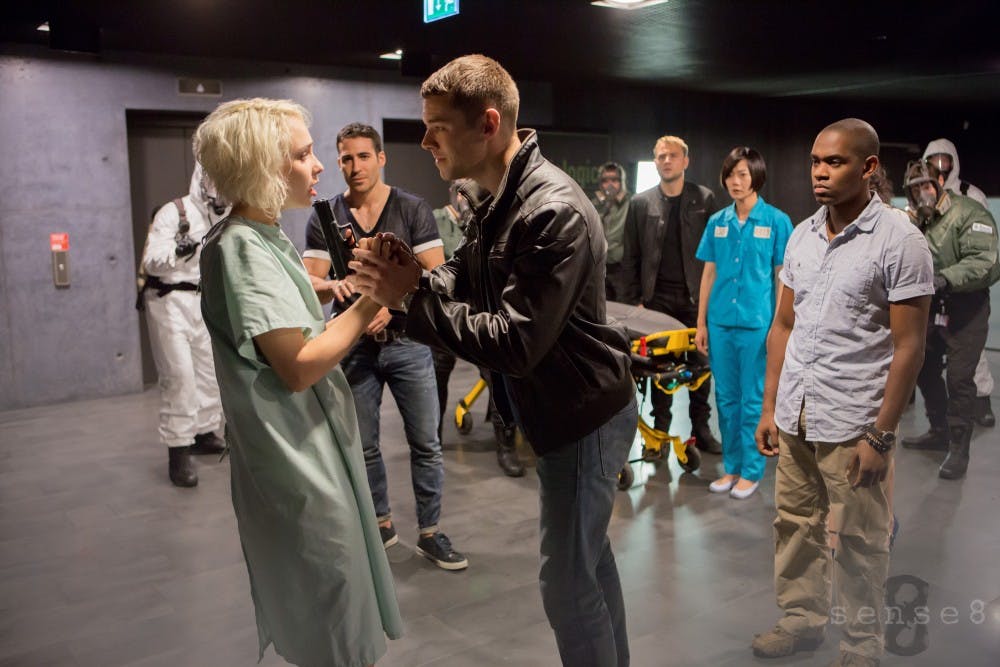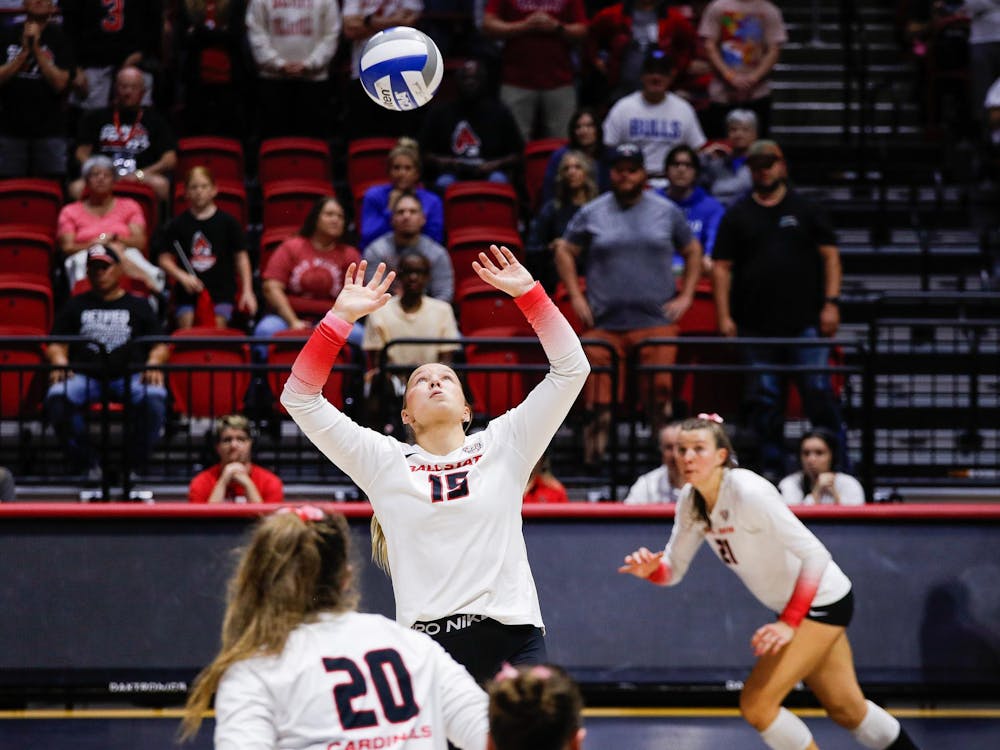THE SENSATES
- Capheus (Aml Ameen), a bus driver in Nairobi
- Sun Bak (Doona Bae), a businesswoman and kickboxer in Seoul
- Nomi Marks (Jamie Clayton), a lesbian trans woman, blogger and hacker in San Francisco
- Kala Dandekar (Tina Desai), a Hindu pharmacist in Mumbai in the midst of a wedding she is unsure of
- Riley Blue (Tuppence Middleton), a DJ from Iceland whose past drove her to leave for London
- Wolfgang Bogdanow (Max Riemelt), a locksmith in Berlin who is involved in organized crime
- Lito Rodriguez (Miguel Ángel Silvestre), a closeted gay actor in Mexico City
- Will Gorski (Brian J. Smith), a cop in Chicago troubled by an unsolved murder
Daniel Brount is a senior creative writing major and writes ‘Do You Copy?’ for the Daily News. His views do not necessarily agree with those of the newspaper. Write to Daniel at djbrount@bsu.edu.
“What’s going on?”
For the eight “sensates” in the new Netflix original series “Sense8,” this is an entirely valid question.
Created by the Wachowskis and J. Michael Straczynski, the series follows eight strangers from all around the world as they discover that they are connected in a sort of neural network. When “What’s Up?” by 4 Non Blondes starts playing in one of the sensate’s headphones, the other seven suddenly get the song stuck in their head and start singing it.
The montage that follows is one of many parts that prove the show, despite being labeled a sci-fi drama series, is more about humanity at the core than anything else.
With the neural network between the characters, they essentially have an extended empathy between each other. This allows them to do more than hear the same song; they can taste what the other tastes, feel what the other feels.
They can also use each other’s skills. This especially helps in the show’s numerous action sequences, considering only a few of the characters can actually fight. When he gets into a dangerous situation, Capheus (Aml Ameen), a bus driver in Nairobi, can fight like Sun Bak (Doona Bae), a kickboxer from Seoul. By the way, the fluidity between the different action scenes is incredible. As Bak does the same moves in both Nairobi and Seoul, the shots line up perfectly to the naked eye.
Each of these characters has a subplot of their own, with some more related to the overall plot than others. This main plot consists of a sensate named Whispers (Terrence Mann) who leads an organization that hunts his own kind. When he finds out about the new cluster, his organization begins pursuing them.
But this plot takes a backseat to the sensates’ subplots — it’s likely that Whispers will play a larger role next season if the show is renewed. This season is more about establishing each character and the empathy between them.
One character in particular, Nomi Marks (Jamie Clayton), stands out. Marks, a lesbian transgender woman, is a political blogger and hacker.
 |
|---|
One of the show’s creators, Lana Wachowski, is a transgender woman, and she had a significant role in the writing of Marks’ character. At the 2015 Trans 100 event, Wachowski said the show has “some very intense, autobiographical scenes.” This comes through in Marks, a character who feels incredibly realistic and genuine.
Marks has several deeply emotional moments, especially with her interactions with her girlfriend, Amanita (Freema Agyeman), and another sensate, Lito Rodriguez (Miguel Ángel Silvestre), a closeted gay actor in Mexico City. These moments wonderfully bring out a lot of the political, ideological and emotional conflicts within the LGBTQ community, such as the division between feminism and transgender women and the problems between homosexuality and Mexico’s machisimo ideals.
But the show’s diverse range of storylines explores more than LGBTQ issues. It also explores the issues of the many different religions and cultures of the eight main characters, who live in seven different countries. All this together makes “Sense8” one of the most diverse shows I have ever seen.
While these characters and locations are well-written for the most part, there are a few flaws here and there. Slow motion is often used unnecessarily. Capheus, for example, is almost too obsessed with Jean-Claude Van Damme.
There are also moments where the situations feel too contrived, or the neural connection between the sensates works a little too perfectly. The series also reveals a lot (warning: the show has everything from nudity to live births). Many times the purpose of these instances is clear and effective. Other times, it is questionable.
For some characters, there is just a little too much going on in their storylines for the viewer to understand during the first watch. In some cases, that's a good thing. The depth is powerful. But going through the show a second time, so much more makes sense and there's time to catch all the details missed the first time.
It's no surprise that there are flaws here and there, but even in those moments, the fantastic cinematography and music make up for it.
So “what’s going on?”
A lot.
The Wachowskis and Straczynski were extremely ambitious in packing all of this into one show. They crammed in eight subplots and a main plot, filmed in eight different countries and took on more ideological issues than I can count.
So go into “Sense8” knowing it is going to be complicated and slow at some points. But after digesting each episode, it is entirely worth it.
Rating: 4.5/5





